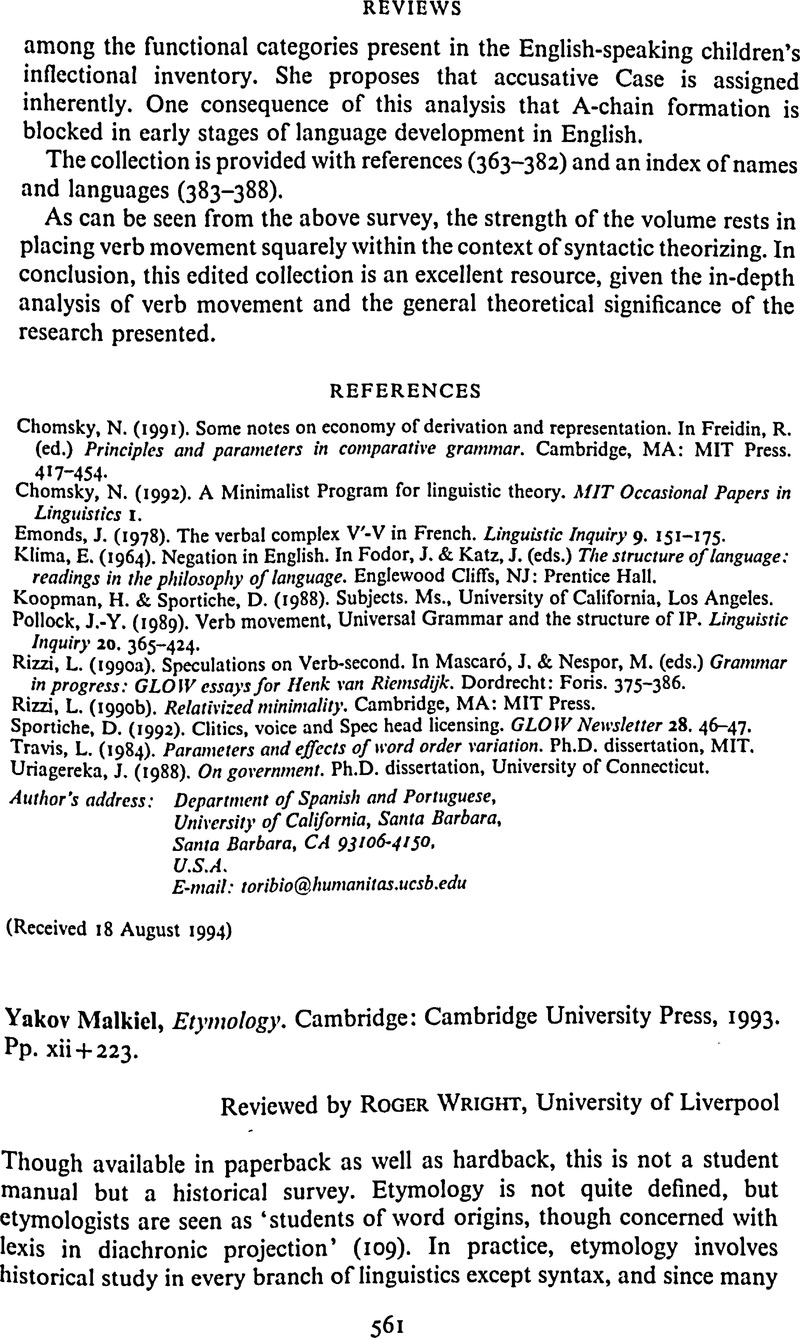No CrossRef data available.
Article contents
Yakov Malkiel, Etymology. Cambridge: Cambridge University Press, 1993. Pp. xii + 223.
Published online by Cambridge University Press: 12 June 2009
Abstract
An abstract is not available for this content so a preview has been provided. Please use the Get access link above for information on how to access this content.

- Type
- Reviews
- Information
- Copyright
- Copyright © Cambridge University Press 1994
References
REFERENCES
Harris-Northall, R. (1990). Weakening processes in the history of Spanish consonants. London: Routledge.Google Scholar
Lass, R. (1980). On explaining language change. Cambridge: Cambridge University Press.Google Scholar
Malkiel, Y. (1989). The hypothetical base in Romance etymology. In his Theory and practice of Romance etymology. (Part A.) London: Variorum. 1–100.Google Scholar
Malkiel, Y. (1993). Comparative Romance linguistics in the United Kingdom. Journal of the Institute of Romance Studies 2. 1–10.Google Scholar
Pharies, D. (1986). Structure and analogy in the playful lexicon of Spanish. Tübingen: Niemeyer.CrossRefGoogle Scholar
Selig, M., Frank, B. & Hartmann, J. (eds.) (1993). Le Passage à l'écrit des langucs romanes. Tübingen: Narr.Google Scholar
Wright, R. (ed.) (1991). Latin and the Romance languages in the early Middle Ages. London: Routledge.Google Scholar
Wright, R. (1992). The asterisk in Hispanic historical linguistics. Journal of Hispanic Research 1. 1–16.Google Scholar




